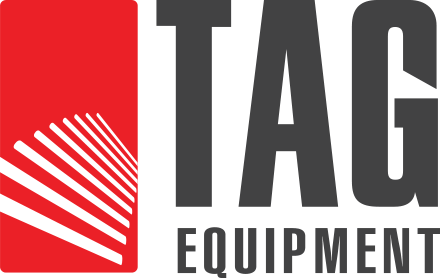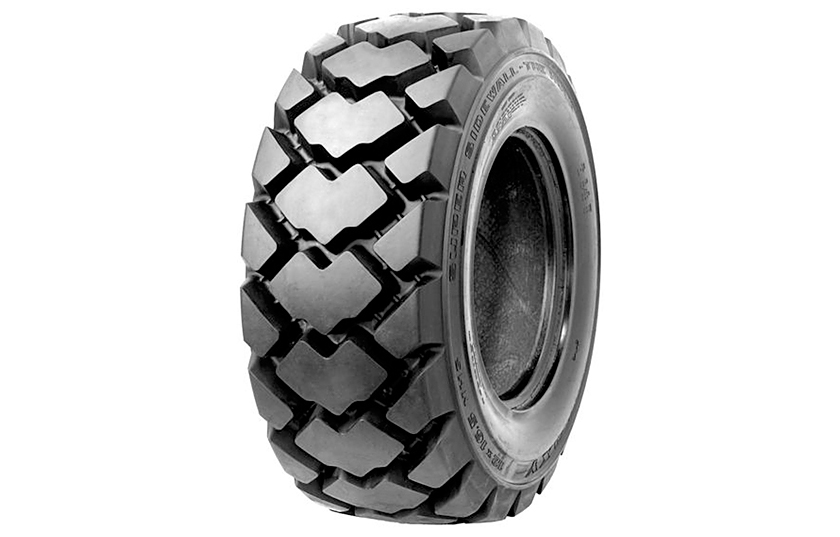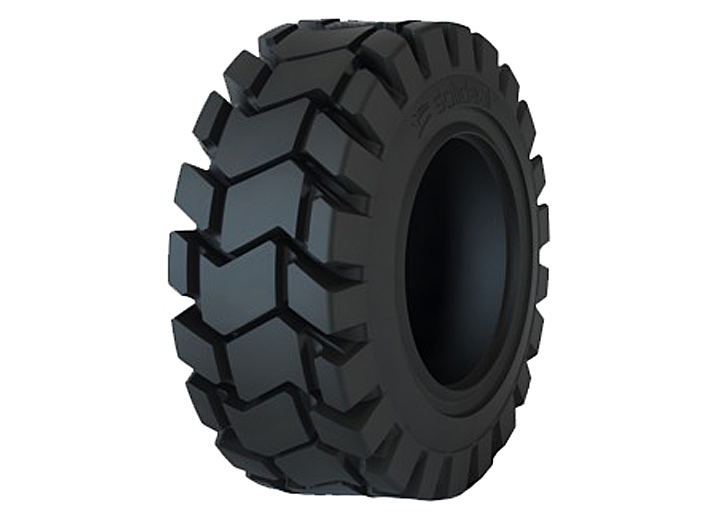Skid Steer Tire Comparison: Solid vs. Pneumatic Tires
At TAG Equipment, we supply solid and pneumatic skid steer tires engineered for Canadian job-site conditions — trusted by contractors and rental fleets across Ontario and Canada. Understanding the difference between solid and pneumatic tires ensures you choose the right option for your machine and working conditions. In this guide, we compare both types to help you make the best fitment choice for your skid steer.
What Are Skid Steer Tires?
Skid steer tires are specifically designed to handle the demands of skid steer loaders, which operate by skidding rather than turning traditionally. These machines require durable tires that can support heavy loads while withstanding rough terrain and continuous movement.
There are two common types:
- Pneumatic tires – air-filled and flexible, ideal for smoother surfaces or jobs requiring comfort and traction.
- Solid tires – made from solid rubber compounds, perfect for rugged conditions where puncture resistance is essential.
Tire selection impacts your machine’s performance, operator comfort, and long-term maintenance costs. Whether you need tires for skid steer loaders used in landscaping, construction, or demolition, choosing the right type is essential for optimal productivity. If you operate compact track loaders or mini excavators, we also carry rubber tracks compatible with major OEMs.
Solid vs Pneumatic Tires: Key Differences
Here’s a side-by-side comparison of solid vs pneumatic tires to help clarify how each performs in typical working conditions:
| Feature | Solid Skid Steer Tires | Pneumatic Skid Steer Tires |
|---|---|---|
| Design | Airless, solid rubber construction | Air-filled with flexible sidewalls |
| Durability | Resistant to punctures, lasts 3–5× longer | Vulnerable to flats and damage |
| Comfort | Less shock absorption, rougher ride | Softer ride, absorbs vibration |
| Maintenance | Low; no air pressure or patching needed | Requires regular checks and repairs |
| Cost | Higher upfront, but cost-effective over time | Lower initial cost, more replacements |
| Load Capacity | Better suited for heavy loads | Lower capacity under intense conditions |
| Applications | Demolition, scrap, construction | Landscaping, snow removal, light-duty work |
Benefits of Solid Skid Steer Tires
Solid tires provide excellent value and reliability in high-risk environments:
- Puncture resistance: Designed to withstand nails, debris, and sharp materials without going flat.
- Minimal downtime: No air means fewer delays and more consistent performance.
- Longer lifespan: Typically lasts several times longer than pneumatic tires.
- Ideal for heavy-duty use: Best suited for demolition sites, scrap yards, and similar harsh terrains.
They are an ideal solution when durability and minimal maintenance are top priorities. TAG Equipment offers Camso and Traxter solid tires, known for puncture resistance and long wear life in demolition, recycling, and general construction environments.
If you’re looking to extend uptime, explore our durable undercarriage and track components built for compact loaders and excavators.
Benefits of Pneumatic Skid Steer Tires
Pneumatic tires offer performance advantages for softer environments and comfort-focused operations:
- Smooth ride: Air cushioning absorbs shocks, reducing operator fatigue.
- Better traction: Especially effective on uneven, muddy, or icy terrain.
- More affordable upfront: Great for businesses prioritizing lower initial investment.
- Flexible design: Helps machines adapt to different ground surfaces.
For work on snow, turf, or soft ground, pneumatic options may outperform solid alternatives in ride quality and surface handling.
Which Skid Steer Tire Is Best for You?
Our solid and pneumatic skid steer tires are compatible with major machine brands, including Bobcat, CAT, John Deere, Case, and Kubota. Selecting between pneumatic and solid tires depends on your working conditions and equipment needs:
- Choose solid tires for high-impact, high-debris sites like demolition or construction. They reduce the risk of flats and offer longer operational life.
- Choose pneumatic tires for comfort-focused tasks like landscaping or snow removal, where surface preservation and operator comfort matter.
To request a quote or check compatibility for your skid steer model, contact us today. Our experts at TAG Equipment can recommend the best tire solution based on your machine and worksite.
Skid Steer Tire Selection for Different Terrains
The type of terrain you operate on plays a major role in choosing the right tires:
- Concrete and rocky terrain: Solid tires provide unmatched durability and puncture resistance.
- Soft, muddy, or wet ground: Pneumatic tires offer better floatation and traction.
- Snow or icy surfaces: Pneumatic tires with appropriate tread ensure better grip and ride quality.
- Mixed terrain: Consider a hybrid approach or tread pattern tailored to your most frequent surface type.
Matching your tires to your terrain ensures safety, performance, and long-term savings. For optimized performance, it’s also important to match your tire selection with the right construction equipment attachments for your application, whether it’s grading, digging, or snow removal. As a construction dealer alternative for tracks, tires, and attachments, TAG Equipment delivers OEM-spec quality backed by hands-on support and nationwide shipping.
Frequently Asked Questions About Skid Steer Tires
Which Skid Steer Tire Is Best for Off-Road Conditions?
How Long Do Skid Steer Tires Last?
Can You Use Pneumatic Tires on a Skid Steer Loader in Winter?
Related:


